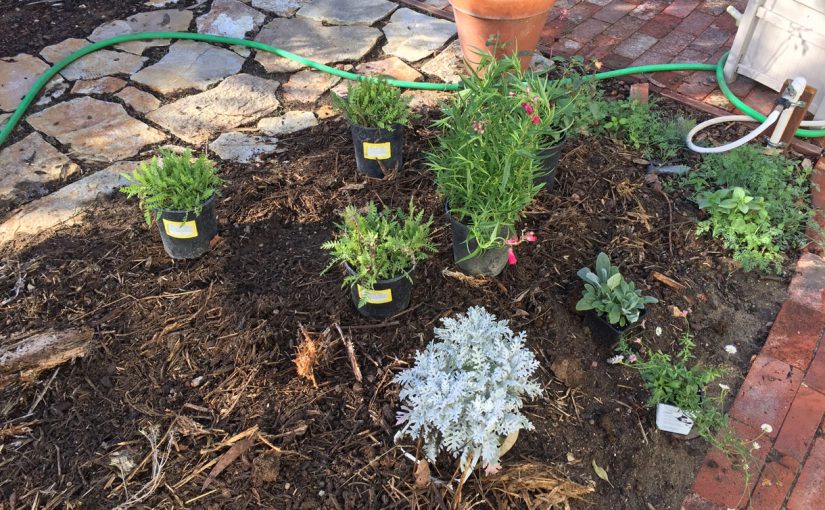Planting a Pollinator Mound
After the second year of the garden, the old wooden raised beds were falling apart and the owner wanted a perennial solution that would be attractive year round and feed pollinators. Although having a spot to plant food had been originally desired, the upkeep was not in alignment with an increasingly busy schedule.
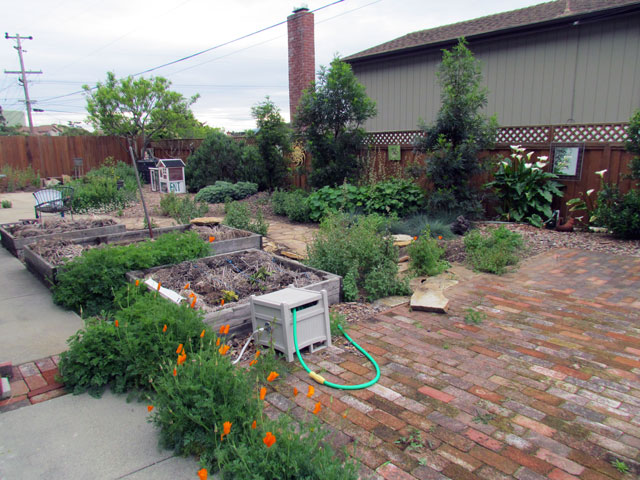
The sidewalk along the house was very narrow and the owner had leftover brick added to widen the path against the house. This left a central area of soil about 14 feet long and 4 feet wide that could be planted with low care perennials.
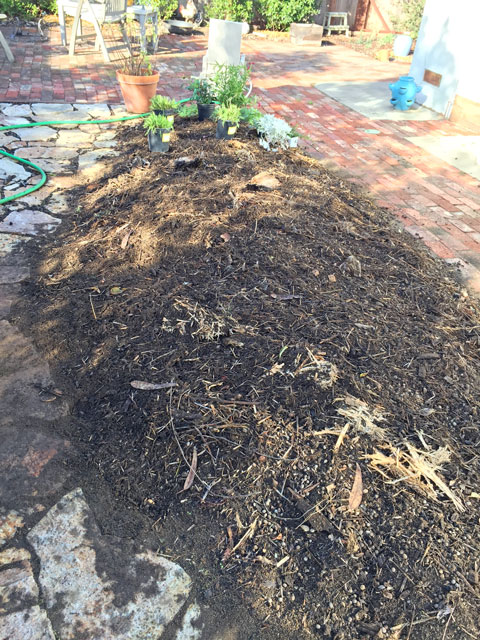
The plants needed to be perennials with low water and maintenance needs and offer lots of nectar and pollen in long overlapping seasons. The colors needed to be harmonious and blend with the other plantings already growing in the garden. Although the rest of the garden has many native California plants we decided that this spot could be a looser mix of perennials to feed a broader list of pollinators.
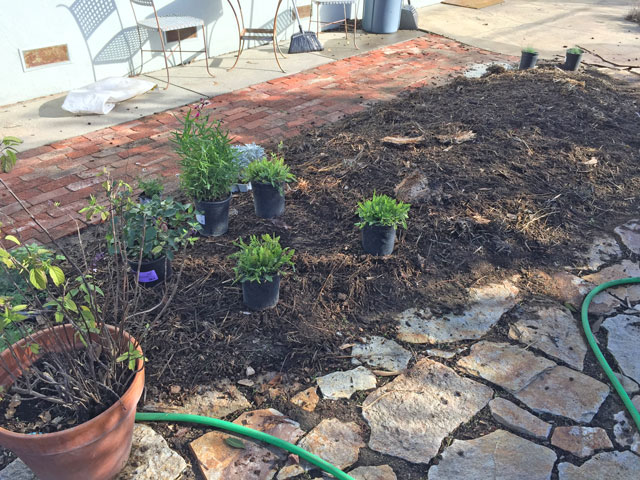
The pollinator plant list was refined down to:
- Achillea filipendulina – ‘Gold Plate’ Yarrow
- Erigeron karvinskianus – Santa Barbara daisy
- Festuca glauca – Elijah Blue Fescue
- Lavendula augustifolia ‘Hidcote’
- Penstemon ‘Garnet’
- Rosa mutabilis – Butterfly Rose
- Salvia ‘Wendy’s Wish’
- Salvia ‘Waverly’
- Senecio cinneraria – Dusty Miller
- Stachys byzantina – Lamb’s Ears
- Packet of California native wildflowers seeds sprinkled across the mound
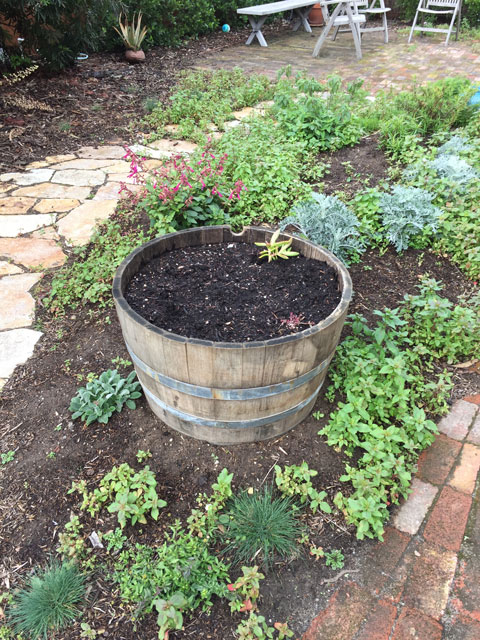
The yarrow, dusty miller and Santa Barbara daisy are attractive to butterflies and syrphid flies, while the tube flowers like the penstemon and salvias attract hummers and night moths. The small lavender and butterfly rose feed native and domesticated bees. The fescue is not a pollinator plant, but there needed to be some repeating texture and blue color to tie in the other areas of the garden. All were planted in the fall well before the winter solstice and have had ample water from the generous rain this year (2018-19). The fall is the best time to plant a perennial garden on the Central Coast. Ditto for broadcasting native wildflowers before the rains start.
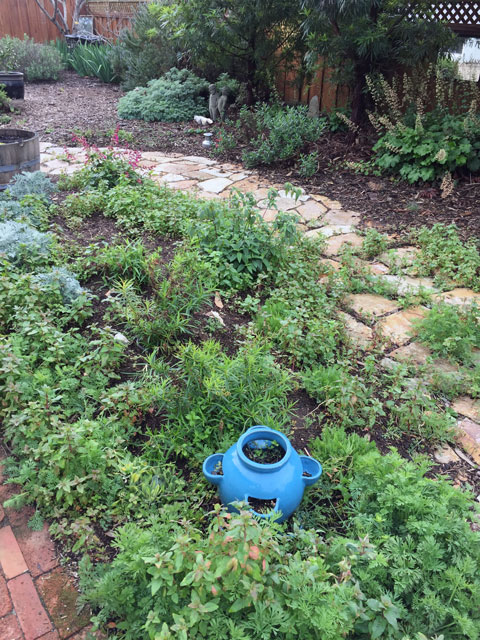
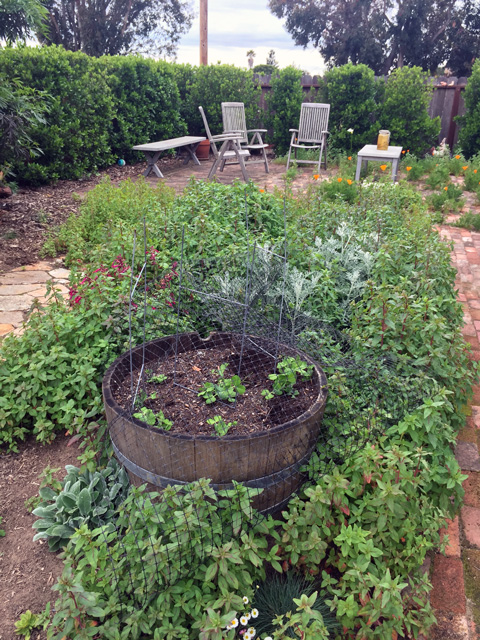
The final plant for the mound was to be a Rosa chinensis ‘mutabilis’ but it proved to be elusive in the local and bay area nurseries. Multiple calls to various nurseries beginning in October could not source the plant in the pot. Annie’s Annuals on-line had listed but not available for ship. I took cuttings in April having lost faith with the nurseries. This is a common problem in the trade. Trends change and beautiful plants become unavailable because no one is growing for this season. This is where a little skill with propagation can provide plants that might be a hard to locate if there is parent stock available.
If you are not familiar with it, the butterfly rose is a very hardy and delightfully colored rose that begins as a yellow bud, opens to pink and deepens to rose red before the petals fall off. It is one of the EarthKind® Texas A&M. This coloration will play off of the yellow yarrow, the magentas in the penstemon and ‘Wendy’s Wish’ salvia. Blue purple ‘Waverly’ salvia and deep blue ‘Hidcote’ lavender will contrast with the yellows and support the magenta colors. The plants with silver/gray foliage add interest when not blooming. So far, the ‘Wendy’s Wish’ has been reliably blooming since we planted it, but still waiting on the spring show for the rest of the mound.
